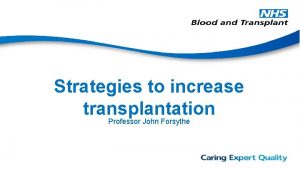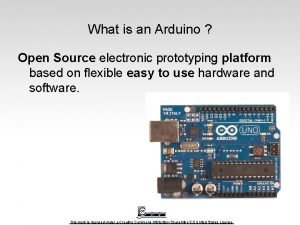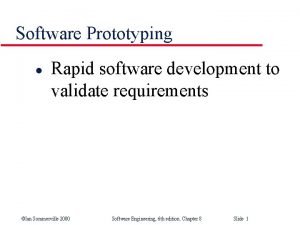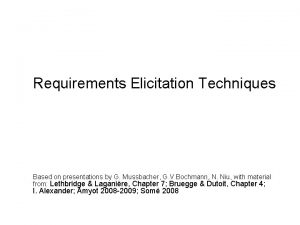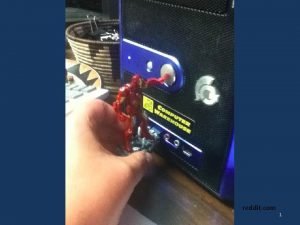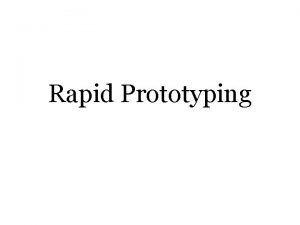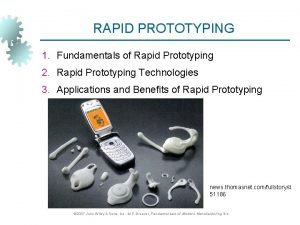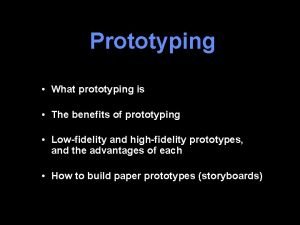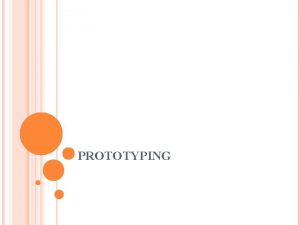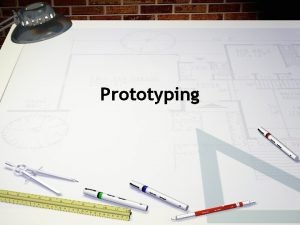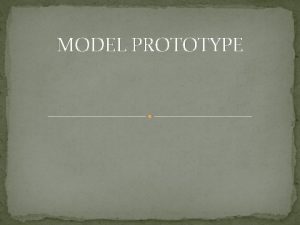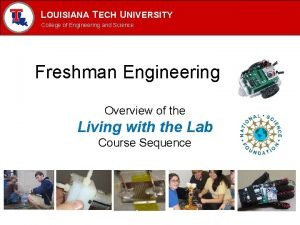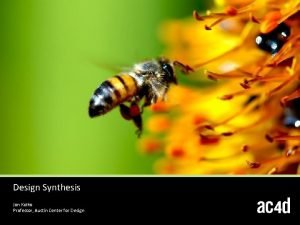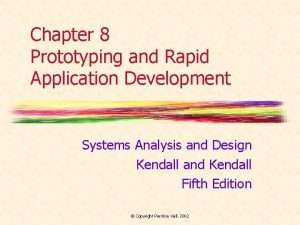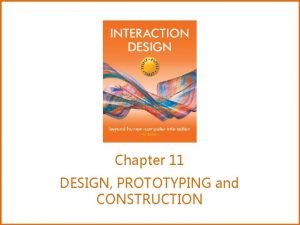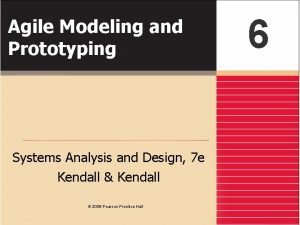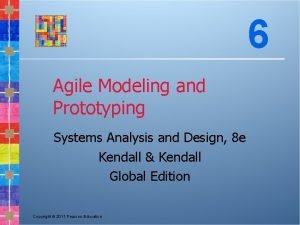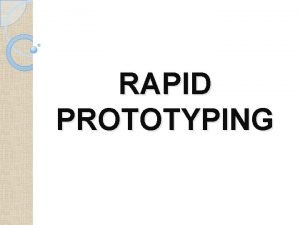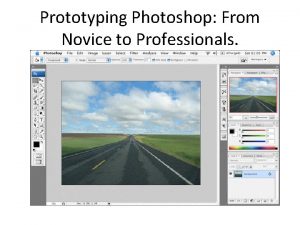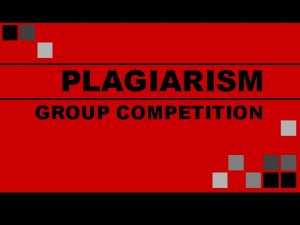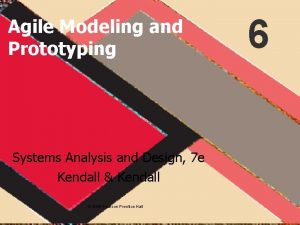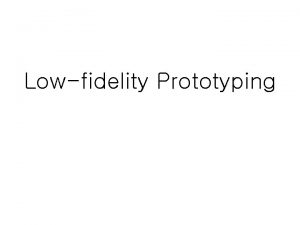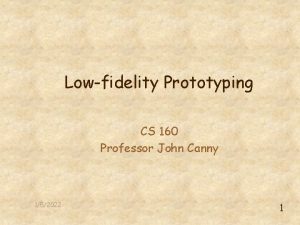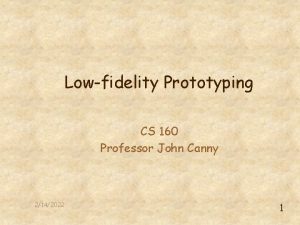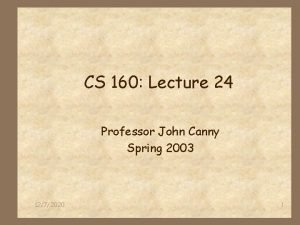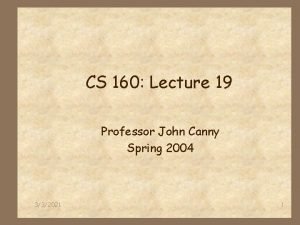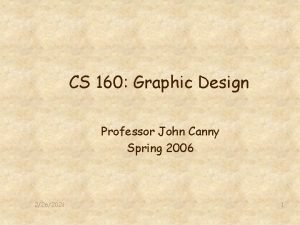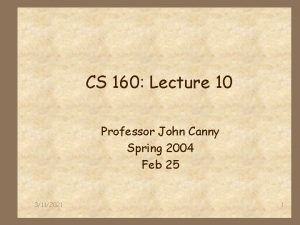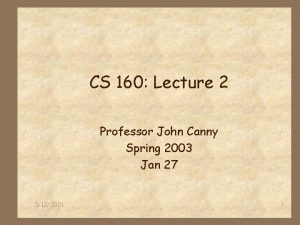Lowfidelity Prototyping CS 160 Spring 2003 Professor John


































- Slides: 34

Low-fidelity Prototyping CS 160, Spring 2003 Professor John Canny Jan 5 1/10/2022 1

Outline 4 Low-fidelity prototyping 4 Wizard of OZ technique 4 Administrivia 4 Informal user interfaces 4 Sketching user interfaces electronically 1/10/2022 2

Why Do We Prototype? 4 Get feedback on our design faster * saves money 4 Experiment with alternative designs 4 Fix problems before code is written 4 Keep the design centered on the user 1/10/2022 3

Fidelity in Prototyping 4 Fidelity refers to the level of detail 4 High fidelity * prototypes look like the final product 4 Low fidelity * artists renditions with many details missing 1/10/2022 4

Low-fidelity Sketches 1/10/2022 5

Low-fi Storyboards 4 Where do storyboards come from? * Film & animation 4 Give you a “script” of important events * leave out the details * concentrate on the important interactions 1/10/2022 6

1/10/2022 7

Ink Chat 4 Black: page content 4 Red: page title 4 Green: annotations 4 Blue: links 1/10/2022 8

Why Use Low-fi Prototypes? 4 Traditional methods take too long * sketches -> prototype -> evaluate -> iterate 4 Can simulate the prototype * sketches -> evaluate -> iterate * sketches act as prototypes + designer “plays computer” + other design team members observe & record 4 Kindergarten implementation skills * allows non-programmers to participate 1/10/2022 9

Hi-fi Prototypes Warp 4 Perceptions of the tester/reviewer? * formal representation indicates “finished” nature + comments on color, fonts, and alignment 4 Time? * encourage precision + specifying details takes more time 4 Creativity? * lose track of the big picture 1/10/2022 10

The Basic Materials 4 Large, heavy, white paper (11 x 17) 4 5 x 8 in. index cards 4 Tape, stick glue, correction tape 4 Pens & markers (many colors & sizes) 4 Overhead transparencies 4 Scissors, X-acto knives, etc. 1/10/2022 11

1/10/2022 12

Constructing the Model 4 Set a deadline * don’t think too long - build it! 4 Draw a window frame on large paper 4 Put different screen regions on cards * anything that moves, changes, appears/disappears 4 Ready response for any user action * e. g. , have those pull-down menus already made 4 Use photocopier to make many versions 1/10/2022 13

Preparing for a Test 4 Select your users * understand background of intended users * use a questionnaire to get the people you need * don’t use friends or family 4 Prepare scenarios that are * typical of the product during actual use * make prototype support these (small, yet broad) 4 Practice to avoid “bugs” 1/10/2022 14

Conducting a Test 4 Four testers (minimum) * greeter - puts users at ease & gets data * facilitator - only team member who speaks + gives instructions & encourages thoughts, opinions * computer - knows application logic & controls it + always simulates the response, w/o explanation * observers - take notes & recommendations 4 Typical session is 1 hour * preparation, the test, debriefing 1/10/2022 15

Conducting a Test (cont. ) 4 Greet * get forms filled, assure confidentiality, etc. 4 Test * facilitator hands written tasks to the user + must be clear & detailed * facilitator keeps getting “output” from participant + “What are you thinking right now? ”, “Think aloud” * observe -> no “a-ha”, laugh, gape, etc. 1/10/2022 16

Conducting a Test (cont. ) 4 Debrief * * fill out post-evaluation questionnaire ask questions about parts you saw problems on gather impressions give thanks 1/10/2022 17

Evaluating Results 4 Sort & prioritize observations * what was important? * lots of problems in the same area? 4 Create a written report on findings * gives agenda for meeting on design changes 4 Make changes & iterate 1/10/2022 18

Advantages of Low-fi Prototyping 4 Takes only a few hours * no expensive equipment needed 4 Can test multiple alternatives * fast iterations + number of iterations is tied to final quality 4 Almost all interaction can be faked 1/10/2022 19

Wizard of Oz Technique 4 Faking the interaction. Comes from? * from the film “The Wizard of OZ” + “the man behind the curtain” 4 Long tradition in computer industry * prototype of a PC w/ a VAX behind the curtain 4 Much more important for hard to implement features * Speech & handwriting recognition 1/10/2022 20

Administriva 4 Contextual inquiry due next Weds 4 Any questions about project, class, etc? 4 Break for 5 minutes 1/10/2022 21

Informal UIs for Early Stage UI Design – “Design Exploration Phase” 4 Brainstorming * put designs in a tangible form * consider different ideas rapidly 4 Incomplete designs * do not need to cover all cases * illustrate important examples 4 Present several designs to client 1/10/2022 22

Goal of Research in Informal UI Design Tools 4 Allow designers to * quickly sketch interface ideas * test these ideas with users * transform to a more finished design without reprogramming 1/10/2022 23

Quickly Sketch this. . . 1/10/2022 24

Add Behavior. . . 1/10/2022 25

Transform it to this. . . 1/10/2022 26

Drawbacks of Current Tools 4 Require specification of lots of detail * must give specific instance of a general idea + e. g. , exact widgets, fonts, alignments, colors * designers led to focus on unimportant details * evaluators focus on wrong issues 4 Take too much time to use * poor support for iterative design + sketched interface took 5 times longer with traditional tool (no icons) 1/10/2022 27

Paper Sketches 4 Advantages * support brainstorming * do not require specification of details * designers feel comfortable sketching 4 Drawbacks * * do not evolve easily lack support for “design memory” force manual translation to electronic format do not allow end-user interaction 1/10/2022 28

What is SILK? ? Sketching Interfaces Like Krazy 1/10/2022 29

Designing Interfaces with SILK 1)Designer sketches ideas rapidly with electronic pad and pen * SILK recognizes widgets * easy editing with gestures 2)Designer or end-user tests interface * widgets behave * specify additional behavior visually 3)Automatically transforms to a “finished” UI 1/10/2022 30

Specifying Behaviors Sequencing behavior between widgets? before after 4 Storyboards * series of rough sketches depicting changes in response to end-user interaction 4 Expresses many common behaviors 1/10/2022 31

SILK Storyboards 4 Copy sketches to storyboard window 4 Draw arrows from objects to screens Switch to run mode to test SILK changes screens on mouse clicks 1/10/2022 32

1/10/2022 33

DENIM: Designing Web Sites by Sketching 4 Early-phase information & navigation design 4 Integrates multiple views * site map – storyboard – page sketch 4 Supports informal interaction * sketching, pen-based interaction 1/10/2022 34
 Spring, summer, fall, winter... and spring cast
Spring, summer, fall, winter... and spring cast Promotion from assistant to associate professor
Promotion from assistant to associate professor Autumn season months
Autumn season months Professor john forsythe
Professor john forsythe Professor john forsythe
Professor john forsythe Professor john wood
Professor john wood Sds holland food bv
Sds holland food bv Professor john hattie
Professor john hattie Professor john hughes
Professor john hughes Professor john stanley
Professor john stanley Open source electronics prototyping platform
Open source electronics prototyping platform Rapid prototyping data formats
Rapid prototyping data formats Rapid prototyping software development
Rapid prototyping software development Object oriented life cycle model
Object oriented life cycle model Prototyping process in software engineering
Prototyping process in software engineering Iterativ inkrementelles vorgehensmodell
Iterativ inkrementelles vorgehensmodell Prototyping elicitation technique
Prototyping elicitation technique Design prototype test reddit
Design prototype test reddit Prototyping definition
Prototyping definition Liquid based rp system
Liquid based rp system Software prototyping benefits
Software prototyping benefits Prototyping definition
Prototyping definition Prototyping involve compromises
Prototyping involve compromises Gambar model prototyping
Gambar model prototyping Rapid prototyping wikipedia
Rapid prototyping wikipedia Louisiana tech university engineering
Louisiana tech university engineering Prototyping meaning
Prototyping meaning Rapid application development prototyping
Rapid application development prototyping Compromises in prototyping
Compromises in prototyping Patched up prototype
Patched up prototype Patched-up prototype
Patched-up prototype Rp technique
Rp technique Photoshop training selby
Photoshop training selby Rapid prototyping could be an advantageous methodology
Rapid prototyping could be an advantageous methodology Patched up prototype
Patched up prototype



